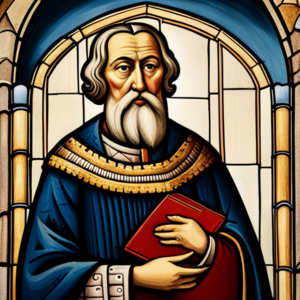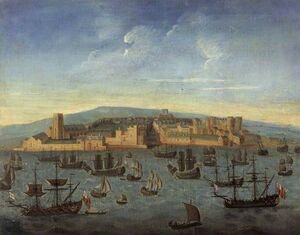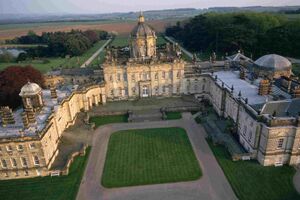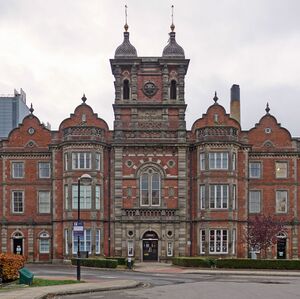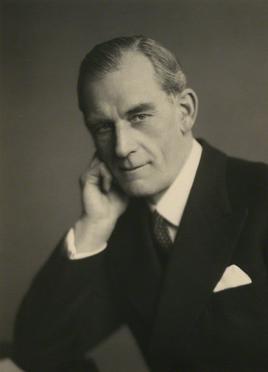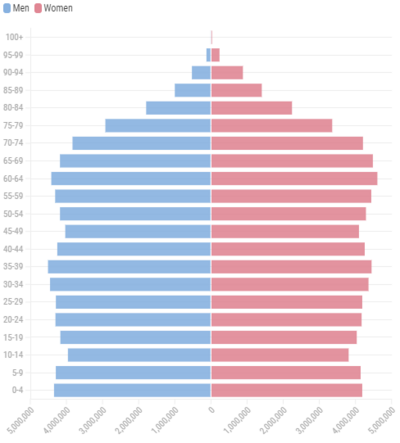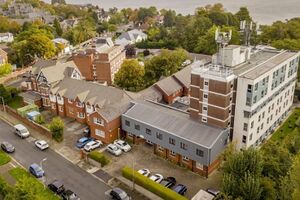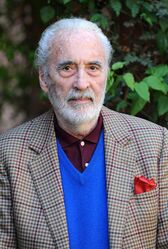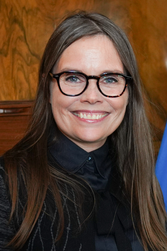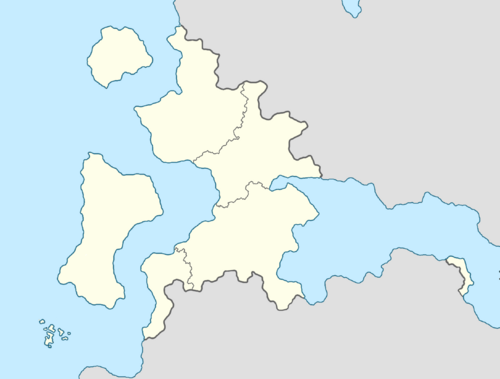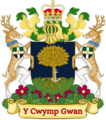Esthursia
| This article remains unfinished, and changes according to developments and/or adaptations to Esthursian alt-history, politics and culture. This section of the wiki is undergoing a renovation as it moves to a new section. |
Union of Great Esthursia Anning ofþ Esþursland Samband av Esþursland Undebau yr Esddŵrsu | |
|---|---|
| Motto: Y Cywmp Gwan The Weak Fall (Þára Áseolc Hréosan) | |
| Anthem: Progress and Unity | |
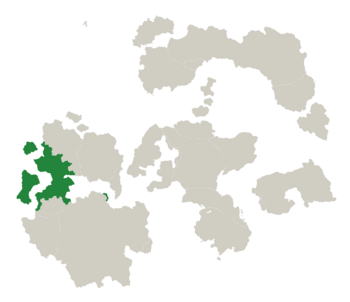 Esthursia (green), on the continent of Auroria | |
| Status | Federal semi-direct constitutional monarchy |
| Location | Location of the Union of Esthursia (dark green) in Auroria (grey) |
| Capital and largest city | Weskerby 40°15'N, 96°34'E |
| Official languages | Osynstric, Atlish |
| Recognised national languages | Osynstric, Atlish, Ezhonian, Consence |
| Recognised regional languages | Asthonic, Ezho-Osynstric |
| Religion (2022) | Irreligious (74.1%), Church of Athers (21.8%), Messianism (1.9%), Other (2.2%) |
| Demonym(s) | Esthursian, Esthur/Esther |
| Government | Unitary parliamentary constitutional monarchy |
| Arthur VI (1947-, b. 1930) | |
| Harold Osborne (2015-, Social Democrat) | |
• Afterthane | Charles Burnside and Chloe Atkinson (2022-, Green-Left) |
• Chancellor of the Landsfere | Charles Burnside (2023-, Green-Left) |
• Astjórn of Asþonhelm | Iðunn Þórsenn (2016-, HNU) |
• First Minister of Ezhonyth | Perran Trefordh (2019-, Western Republican) |
• First Minister of Consewent | Hedrek Lanenys (2019-, Western Republican) |
| Andrea Redgard (2019-, Social Democrat) | |
• Alderman of Brantley | Gareth Moresbond (2019-, Social Democrat) |
| Legislature | Houses of Berworth |
| House of Thanes | |
| House of Ministers | |
| Formation | |
• Capitulation of Caerllwyfen to Classical Osþursian Empire | May 11, 298 |
• Proclamation of Osynstry | January 15, 466 |
• Folksmoot Act of Osynstry | November 22, 1303 |
• Viceroyalty of Assuran | 1535-1686 |
• Declaration of Overlaw | February 27, 1689 |
• Codification of Overlaw | December 21, 1963 |
| Area | |
• | 687,244 km2 (265,346 sq mi) |
| Population | |
• 2022 estimate | |
• 2017 census | |
• Density | 191.66/km2 (496.4/sq mi) |
| GDP (nominal) | Q1 2023 estimate |
• Total | |
• Per capita | |
| Gini (2022) | low |
| HDI (2022) | very high |
| Currency | Esthursian arian shilling (ʃ); 100ſ = ʃ1 (EAS) |
| Time zone | UTC+6 (AST / WEST) |
| Date format | dd-mm-yy |
| Driving side | left |
| Calling code | +33 |
| Internet TLD | .et |
Esthursia (pronounced [ˈesθɜːsiə]), Atlish: Esþursland, Asthonic: Esþursland), officially the Union of Esthursia (Atlish: Anning ofþ Esþursland, Asthonic: Samband av Esþursland) is a sovereign state on the continent of Auroria. It includes seven federal ridings - the largest one of which being Osynstry, which contains a majority of the population and area - and covers an area of approximately 687,011km². It is bordered by Weskermere to the east, and Ocean of Consence to the west, with Perran's Channel passing within its borders - the large bodies of water that surround Esthursia mediate its climate, with a subpolar zone in the north, temperate areas across the centre and south, and a generally rainy climate, particularly towards the west. Esthursia has a population of 133 million inhabitants as of 2023, with the Union's largest metropolitan area being that of Greater Weskerby, boasting a population of over 15 million, with the Brantley-Shefforth area in the north being the north's largest metropolitan area.
Esthurs have dwelt in and around the area of modern Osynstry for around 3000 years, although the exact origins of these - apart from the fact that they are a Gotic-native mix - is unknown. The cradle of Esthur culture is initially just south of modern Execester in the west of the mainland. Modern Esthurs are a mix of three cultures - the Cumbrics, who mostly inhabit the western isles, as well as the far-south-west in Ezhonyth; the Atlish, who inhabit the north, including north and west Osynstry as well as Helmark; and the Osynstrish, who inhabit Osynstry, particularly concentrated to the south and east. Cumbric culture is particularly divergent thanks to the geographic separation following the breakup of Cumbria in the 1000s, leaving the mainland Cumbric peoples speaking a different language and feeling a separate identity to those still on the isles.
The Classical Empire of Esthursia peaked in the 13th and 14th centuries, bringing about a golden age of education and prosperity, before the Empire subsided; following a century of Suavidici suzerainty during the 1400s, the Tardineanni Empire occupied the nation from the turn of the 16th century, setting up a Viceroyalty in 1535, which lasted until the War for Independence (1656-1686). The new Royal Union thereafter consolidated control, following a Popular Revolution in 1688 by the general population to cement rights and freedoms, and annexed the Tardineanni territory of Cordane in 1756 in a war that led to the death of the contemporary Tardineanni emperor Hermani II (the Great). Esthursia consequently established itself as a prominent naval power and trading centre, particularly thanks to its location between the western continents and Auroria at large. Esthursia also reformed its monarchy in the 1600s, which slowly receded into constitutional monarchy, especially following the Republican Struggle of 1836, displacement of Forethegn Turnbrook and mid-20th century reforms.
Esthursia became increasingly wary once again of foreign invasion during the Fascist Wars, and both contemporary Kings as well as contemporary Forethegn Asmont began intense industrialisation and built the Esthursian welfare state. Having come out of the Fascist Wars virtually untouched, Esthursia emerged as a heavily industrialised and developed nation. Following the Fascist Wars, Esthursia formed an official Constitution in 1957 under Forethegn Newell. The deindustrialisation of Esthursia led to some social and civil unrest, and the ensuing disputes led to a strengthening of the welfare state, furthering of trade unionism and greater interest in globalising. The 2009-12 financial crisis brought about significant sociopolitical consequences, such as a shift away from neoliberal economics and over a decade of Social Democratic government.
Esthursia possesses a highly-developed growing regional economy, which economists have called "post-capitalist" and adhering to the Asmont model, with the hallmarks of very high unionisation, decommodification of housing, large state intervention with a principle of general taxation funding public services, and high socioeconomic equality rates; however, some of its regions, particularly the south-east of Osynstry and Ezhonyth, suffered deeply from the effects of deindustrialisation and the end of coal mining in the late 20th century. Esthursia continues to export both technology and primarily renewable automobiles, healthcare products, as well as renewable energy, and is a large importer and exporter of other goods, and is a global centre for research and university education; it also has a large tourism industry, thanks to its largely untouched "Kingswoods", relatively low violent crime rates, proficiency in Mercanti and distinct range of climates in different regions.
The Union of Esthursia is a prominent founding member of both the Allied Nations (with Prydania and Norsia) and Vieremä Group (alongside Sorovia and Tardine), and one of the first members of the since-defunct Aurorian Economic Alliance, as well as being a participating member of the Union of Aurorian States. Esthursia is also an observer nation in the Food Security Organisation and participates in environmental conservationist and human rights interests globally.
Etymology and terminology
Esthursia is a neologism of Osthursia, adopted by a mostly Osynstric Mercanti population. Osthursia is known to be "the land of the Osthurs", however the etymology of the word "Osthur" is unknown. Theories include foreign deities, the utterance of a historic battle cry or the name of a notable leader. The word Esthursia is also influenced by the word for Ethia in Old Cumbric, "edhia".
Osynstry is derived from the Old Lower Osynstric "Asynctria" - meaning "synchronised state". This is due to the fact that from a relatively primitive time, Osynstry functioned as a federalised, or localised state under one King. Cumbria is derived from the Cumbric "cwm" - meaning valley - which reflects the terrain that the capital, Yr Gwynydd, resides within. Cumbria ceased to be a homogenous entity between the 1100s - when its final Kings began to lose grip over the external regions - and the 1500s - by which point Cumbrish had more or less lost its mutual intelligibility. It has since splintered into multiple languages, including Helvellian, Ezhoneg and Merthian; Llarenic has since gone extinct as a result of Gotic speakers settling in the region following the 1600s, after an initial period of separation.
History
Prehistoric Esthursia
Esthursia is known to have been home to agricultural societies as long as 7000 years ago, while artefacts from the prehistoric era include pottery, cave paintings and etchings, and rudimentary temples. The first settlement known is that of Westdaleby, dated to 2200BCE, around when the earliest cultures considered to be Cumbric arrived in mainland Osynstry. Cultures are known to be grouped into three main peoples; the Consence North, Consence South, and Wesker West, all of whom confluence around the modern point of the Execestershire city of Atlington, approximately. These demarcate the areas of similar pottery and architecture from the period; the line between north and south Consence later becomes noteworthy in dialectal Old Cumbric.
The first post-Harnage nation known to modern Esthur archaeologists is dated from around 1500BCE, at which point coins denoted to "Arwaenn" - assumed to be the ruler between around 1560BCE and 1522BCE - have been found. In 955BCE, Cambrion's new ruler, Thegdyn, had appointed himself "bywyd benadur" (life leader); upon the failure of this ruler to solidify control, a document that has been preserved to the current day has denoted the "Cambrion peoples' right to freedom". Cumbric people today maintain this, not the Overlaw, as Esthursia's first declaration of emancipation and recognition of fundamental rights, though its vaguety and the time period it was from, added to the difficulty of assuming meanings from 3000 year old text, all cast doubt on the true meaning of the passage.
The main town of Caerllwyfen (now Execester, north-west Osynstry) became the pseudo-capital for the new empire, however in theory (and, later, in law) the state was federalised - to the point that shires (itself from the Ancient Cambrish word, "s'yr") would often implement different forms of governance, different laws and different taxes (although later the tax system was centralised due to "tax migration" in the era.)
Until the beginning of the Common Era, Cambrion developed steadily, with an affinity for philosophy and "the study of wonderment" - one such development was the concept of basic universal rights. The concept of torture and justice was central to the development of the state - social stratification was quickly followed by the principles of each group being cemented in law. Although some barons (barwns) often refused these rights, the first uprisings usually startled the relatively unprepared militaries, who were not used to the proto-guerilla tactics rather than open warfare used by the revolutions.
By 100BCE, however, the gradual ceding of powers to new localised regimes in exchange for a lack of military violence, the breakdown of trade into set regions, the gradual settlement of Western - mostly Gotic - people and the loss of transport routes on increasingly unused cross-regional areas, all led to the loss of mutual intelligibility of the Ancient Cambrish language. By 200CE, significant extra-continental influence had morphed western mainland dialects into Old Osynstric (at the time known as "Osthursic" - a demonym that gradually diverged into Anthoric, Osynstric and Esthursian). By 250CE, most urban areas along the western coast of the mainland - save for the extreme south-west - were speaking some form of this proto-Osynstric. These peoples continued to arrive into the 1000s and 1100s, and pushed native Cumbric people to Charenbost, Helvellyn, Merthing and Ezhonyth.
Cultural identity increasingly influenced the representatives of these areas - the shire leaders seized on this as a protection mechanism from the threat of internal violence, and thus became reliant on it as a result of this fear. In the year 272, Oswynht - his own name derived from the demonym of his culture - took control of the second most powerful shire of Cambrion; Pen Wynsir (now roughly Weskerby and its peninsula). Attempts to remove him by then-leader Llywelyn the Last were in vain - however Oswynht himself took over a decade to train a loyal army, after multiple mutinies and attempted assassinations.
The Classical Empire
Around the year 298CE, the Classical Osthursic Empire was pronounced at Osthurholm. "Koneng" (King) Oswynht I proclaimed, among other things, "all unfree status aside from reasonable law consequence is henceforth ended for all citizens" - the Declaration of Osthurholm's written source remains a significant contributor to Esthursian history and legal rights.
Social stratification in the Classical Osthursic Empire was comprehensive, with the upper class largely being the only ones with any significant likelihood to read or write in Old Atlish. The Classical Empire was essentially a system of feudal lordships who increasingly came under the jurisdiction of the Imperator, though post-1200 serfdom was abolished and slavery criminalised, peasantry and lordships remained prevalent.
The reign of Hereward the Wise in the 12th century (ruling from 1176-1224) saw the rise of the rule of law, following centuries of gradual accumulating influence for the legislative Thanage, the end of primogeniture in Esthursia for 200 years, and the rise of parliamentary government, seeing Imperial Esthursia take on a semi-democratic republican structure that still in some ways exists to this day. Major actions in this period included the end to slavery, separation of church and state, parliamentary sovereignty, legal codification, the rule by law and judiciary alongside it, and the (pseudo-)election of leaders. The Jarls' Revolt in the early years of his reign failing further brought about societal reform, including the rise of the middle class, and the beginning of the breakdown of feudal society. A mercantile middle-class rose, and the nation prospered from its wool and cotton trade.
This marked the beginning of the Golden Imperial Age of Esthursia, which lasted into the early 14th century, but declined as leaders became more autocratic and as the economy declined, with political instability driving both to worsen. The Empire fell to tyranny and became theocratic in its last decades.
Suavidici suzerainty
In the 1400s, Esthursia found itself a vassal state to the Imperium Suavidici. During this time, the internal western port - and then-capital - of Execester became particularly important, connecting itself to Suavidici and to the western world. Although at first Suavidici rule and puppetry brought a degree of prosperity as it was drawn into the large maritime region of trading and resources, misrule quickly set in, and public sentiment soured, resulting in several Revolts and eventually the arrival of the Tardineanni Empire, who saw the nation as both a key location to control, and the slippage of control by the Imperium as an opportunity to control Esthursia for itself.
The period between the 14th century and the Tardineanni occupation saw a gradual but sustained decline in Esthursia's prosperity and prominence, which further fueled endemic administrative issues. Its population fell back into serfdom, a status not felt by most Esthurs - at least in title - since the 1200s, while trade and economic production both fell dramatically in the 15th century, leading to the phenomenon of lost villages. Vagrancy became a capital crime in 1444, as a hallmark of the Classical Empire's increasing clampdowns on homelessness and tax evasion in the period, especially when it faced having to raise revenue to fight internal conflicts or against the Cumbric remnants, while its middle-class almost entirely lost their wealth over the century. The Church of Athers, which had previously sided with absolutist monarchs, now attempted to pull power away from the state entirely, leading to an on-and-off spate of violence in the aim of seizing power or intimidating people away from dissent. Esthursia was entirely unprepared for an incursion by the middle of the 16th century, and infighting had already broken out by the time that the Tardineanni Empire began its invasion, heavily hampering its ability to defend itself coherently.
Tardineanni occupation
Esthursia was directly occupied for a generation following its relatively fast occupation of the region, and then the Viceroyalty of Assuran, a Tardineanni puppet state, administered Esthursia until the mid-1600s, when the Esthursian Revolution - and Popular Revolution that followed it to cement civil liberties and constitutional law - reinstated full self-determination by the Royal Union gradually over 30 years.
Execester and the western coast, particularly Helmark, suffered from this discoupling from the west and rerouting towards inner Auroria and the east. The capital title shifted from Execester to Weskerby in 1558, following the growth of the new port city on the easternmost peninsula of central Esthursia between the Bay of Yeaburn and the Aughtsey, jutting out into the Weskermere as a key point to control the entire sea. Furthermore, the east coast was sunnier and more protected from raids by the Imperium and by pirates, strengthening its position further in the region. Assuran, however, remained a significant hub of culture and trade during this period into the early 17th century.
In 1619, the Consence Rising took place; riots across the north and west heavily destabilised the Assuran dynasty, who never fully gained back their degree of control or full territorial integrity, as the Royal Union established itself as the united banner of rebellion to foreign rule. An appeaser was appointed following the loss of the previous leader; Klaudis Salvor Moore, who was of mixed Tardineanni-Esthursian (or Tardineanni-Assuranni as would have been known contemporarily), became the new Viceroyal at the end of 1619. He gained a degree of trust from the regime back in Tardine to govern semi-independently, and his rule was deemed both more fair and capable, ensuring a lengthy pause of the destabilisation of the Assuranni viceroyalty as people were more or less appeased.
The ascent of Jackien Estrone Kladerai, a hardliner in the Kladerai dynasty in the Assuran regime, took place in 1656 following the death of Klaudis Moore; very quickly, her rule drove already incensed local peoples to revolt, and her brutal attempts to execute ringleaders publicly and burn down entire towns for lack of subordination completely destabilised the situation. The Royal Union, whom had controlled holdouts since a previous mostly failed revolt in the 1620s, began to seize the west coast, and Jackien's rule saw the Assuran viceroyalty disintegrate gradually over the course of a generation. In 1685, the Kladerai dynasty evacuated as the last holdouts of Assuran rule in Weskerby and Oaksbeck were defeated, and Armston House returned to native hands for the first time since the 1400s.
The Assuranni period had more of a direct effect on Esthursian culture and architecture following its loss than the Suavidici period, especially thanks to the more hands-on approach of Tardine towards ruling and administrating Assuran (including renaming it, though the name did not persist), and this influence can continue to be seen through some idioms, a very small minority persisting to believe in Assuranni Strefandor in Cordane especially, and the architecture and literature written and constructed at the time.
The rule of Llywellyn I continued briefly however his death in 1687 brought about the rise of his more conservative son, Llywellyn II, whose reign brought to an end the first few years of cordial renewed independence. In the years following Esthursian independence, much of the intelligentsia and nobility of the period abandoned their Assuranni ties and mixed cultures to maintain their social status, while those in the north and west had received far less influence due to their independence in the 1620s.
Revolutionary Esthursia
The Popular Revolution in 1686 solidified the promises of the Royal Union following the death of Llywellyn I; successive monarchs were limited in scope, while the Overlaw was first signed in 1687, enshrining basic rights such as democratic elections, freedom from slavery and the right to liberty. This came after initial reneging by Llywellyn II on the scope of rights protection and rule of law, with an unlawful and harshly enforced tax raid sparking a nine-month rebellion and storming of Armston House, the royal palatial estate. The Overlaw thereafter established one of the first comprehensive legislative pieces on human rights, the rule of fair law and freedoms such as the right to stand fair trial. These ideas were later consolidated in the codified incarnation of the Overlaw in 1963, but the core principles and clauses of the Overlaw - as well as its name and format - persist into the modern day.
Post-revolution Esthursia experienced an enlightenment of ideas, culture, literature, art, music and science, and secularised thoroughly after initial movements towards this during the Church's tyrannical acts of the 1600s. By 1750, Esthursia had become a secular nation which had caught up with much of the western world, and a hub of cultural and intellectual exchange. The Crown Society became a prestigious, albeit exclusive and small, group of the society's most prized artists, scientists, musicians and writers, and still exists after its foundation 300 years ago in 1718.
Esthursia engaged in a war with Tardine in 1756, on the hundredth anniversary of its Civil War from Tardine, and seized control of Cordane in order to secure control of the Weskermere, and thus gained increased safety from future invasion. It was annexed fully under the Edward Bourne government of 1794-1821, whereby it was given limited sovereignty over its powers, later consolidated in the 1963 codified Overlaw.
19th century
The role of the monarchy receded further into the 1800s, however the reign of Theobald IV brought about a brief and violent constitutional crisis. Theobald was at heart an absolute monarchist, and the role originally claimed by his predecessors - one that had become increasingly ceremonial and non-participationist - was one he opposed, and the election of a soft republican Forethane in 1835 spelt the start of the crisis. Theobald thus attempted to manufacture a dissolution, which inevitably occurred, but precipitated in a new election as per the Overlaw, creating an even stronger republican majority; Theobald personally met with Forethane Turnbrook in March 1836, in an attempt to force him to resign, after which the latter agreed to only on the impetus that the former would abdicate. The crisis, and republicanism thereafter, ended; however, modern historians believe this was the trigger of modern republican movements, which have resulted in the triggering of the monarchy's dissolution.
The dynasty Theobald headed thereafter ended, and new monarch George XIII was by contrast a democrat who sought even further reduction for his role's prominence, confirming the sidelining of the monarch's role thereafter. A series of Conservative and Liberal governments were formed following this - with free education being pioneered fully during the Liberal Marling government of the 1850s - however the crisis following both the deaths of George XIII in 1879, and the resignation in ill health of Edward Trent in 1882 and disintegration of his governing party (including Esthursia's shortest ruling leader), brought about a communist government led by Jacob Banbury, who engaged in slum clearances, free education, railway construction, economic redistribution, working regulation changes, the end to child labour, mandatory universal education, and water reforms such as universal sewerage and plumbing, though his end goal of a commonly owned economy never materialised.
Esthursia at the very start of the 20th century had returned to Conservative-Liberal government, and in the Salisbury (1911-1922) government, an economic panic precipitated a series of reforms, including the centralisation of banking.
The Scalvian War
Esthursia's new Forethane, James Thorne, arrived at a time of perilous socioeconomic factors - the economy was stagnating, unemployment rising, and civil unrest was beginning to spark. His decision, however, to seek a war in order to boost national morale and secure his future from his predecessor's legacy, was to prove both vitally important and disastrous for Esthursia.
Esthursia went to war with Scalvia in 1923, and engaged in a three-year-long deeply damaging conflict with the nation. In that time, Esthursia's economy plummeted into full crisis, riots broke out violently in almost all major cities, raiding in the southern counties cost the government the modern equivalent of hundreds of millions, and thousands of lives were lost. The governing Conservative Union lost control of domestic affairs after rebellion allowed opposition socialist Workers' Union leader George Asmont to form a majority coalition government with dissenting Conservatives, however, uneasy with the prospect of ensuring an Asmont government, Asmont was denied full power. This allowed the war to drag on for another twelve months, however also entrenched Asmont's popularity; he won the election of 1926 in the second-largest electoral landslide in Esthursian history against the backdrop of economic and social crisis promising to end the war and rebuild Esthursia "bottom-up".
Modern Esthursia
Post-war reconstruction
In 1926, the Workers' Union took to power for the first time since the 19th century; its leader, George Asmont, was not a communist like the previous Workers' Forethane Jacob Banbury - who was actually critical of Asmont's "moderate" policies in his early years - but was an ardent socialist and reformer. The Workers' Union quickly brokered a peace with Scalvia, ending the tumultuous period of war that had embarrassed government ministers and cost Esthursia billions to keep up, and had the task of rebuilding post-war Esthursian society.
The first months of the Workers' Union government sparked the rebellion of the fascist movement in Esthursia at the time, the Osynstric Renewal Front (ORF), led by its Chairman Arnold Rimmer; Rimmer sought the deposition of the King and instating of his sympathising younger brother, Frederick, while he sought the dissolution of democratic elections and installation of a one-party ethnostate. Rimmer's ORF, however, faced a police force in Esthampton protected and joined by a large antifascist presence; the march was not called off, and the March on Esthampton on October 23, 1926 has since been remembered as Union Day, as the fascist movement - with its leader dying the same week after disappearing and the organisation more or less disintegrating following the arrest of many of its leaders and loss of much of its materiel - was soundly defeated by both national police and a large coalition of anti-fascist movements, such as communists, social democrats, liberals, feminists and trade unions. Union Day has been celebrated every year since as a public holiday, commemorating the protection of democracy and the unity shown by the disparate group of pro-democrat forces and movements against fascism.
Asmont's first term was mainly set on rolling back the previous five years. A national investment fund, which he later would merge into the King Edward Investment Fund in 1938, was set up to reinvigorate the economy; wages were raised and labour laws such as the right to a minimum wage and to arbitration were set in stone, and price controls were set in place to prevent further price gouging, a common tactic in 1910s-1920s Esthursia. The economy picked up, leaving the 1920s crisis as a result in 1927-8 - this would begin approximately thirty years of uninterrupted growth, although the strongest period of prosperity was towards the first decade of the period.
The 1930s was a period of wide societal transformation. Asmont nationalised key assets, such as the steel industry and automotives, and set up a universal healthcare system (the Union Health and Care System, or UHCS) in 1929, for which Esthursia is still renowned for globally. Asmont had received a much stronger mandate in his snap election of 1929, and his second term was probably the most radical; housebuilding also became a key policy of the Asmont era, in which over a million homes were built nearly every year from 1930 to 1950, while the socially-held stock of housing reached 45% in 1944, when Asmont first left office. This project was known as the National Housing Plan (NHP), a plan that has been restored under the modern Osborne government in 2016, including its "new towns" provision. The Asmont era also saw the rise of "red-brick" universities, also known as loresteads in Esthursia, to open up education to the working-classes for the first time.
In a period of international turmoil, Asmont set about his two key tenets of geopolitics - non-belligerence and "filling the cracks of war". Esthursia became a key exporter of manufactured goods in the 1930s, 1940s and 1950s, especially automotives, as well as providing services such as healthcare and education; as a result of this, and rising living standards, wages and productivity, the economy saw the "Thirty Years' Miracle", reputed to be between 1926 and 1956.
The second quarter of the 20th century also saw George Asmont aim at the historically aristocratic tendencies of government; the House of Thanes was democratised in 1933, allowing him to become the first Forethane (and to lead the first democratic upper house in doing so) while his land transfers, slow but significant wealth taxes, and high tax rates on the richest all heavily redistributed wealth and income. Further to this, Asmont's final decade was also focused on socially liberal policies, such as the legalisation of homosexuality in 1941, reducing the voting age to 18 and beginning the drafted work for devolution, which would be utilised by the Liberal governments of the 1960s.
George Asmont initially retired in 1944, and his successor Philip Whittaker proved to be able at governance but not as efficient at controlling the party. A legacy of this period was that life expectancy had risen inexorably - from 61 in 1925 to 75 in 1950 - while wages had risen even more, with living standards having advanced substantially since the nadir of the 1920s, while a baby boom coincided approximately with the start and end of Asmont's first period in office.
Aurorian War
Asmont's resignation was short-lived; the rise of a fascist regime in Tardine in 1939 had precipitated a frostening of relations, and despite initial assumptions that Esthursia would be spared from the violence wrought on neighbouring nations (particularly Aubervijr) from 1941, the Tardineanni government nevertheless began setting a war footing with Esthursia too, and a hasty string of skirmishes brought George Asmont back into power as fear grew that war would break out. On 1 February, 1945, Asmont was unilaterally returned into power as the party leader, and thus Forethane, beginning a 10-year-long second stint in power as Whittaker resigned after just 4 months in power.
Tardine, under fascist dictator Pofred Risvie (known as Other Fred in Esthursia thanks to recently-deceased Prince Frederick's similarly fascist tendencies), declared war on Esthursia weeks after in February 1945. The war was primarily centred around control of Cordane - although Tardine never explicitly stated it sought total subjugation of the Esthursian nation, the government and Workers' Union nevertheless viewed that losing Cordane fully would lead to a chain of events culminating in that occurring, thus defended fiercely. Esthursia's decades of rearmament, Asmont's own statesmanship, and a capable naval force all helped the nation force a stalemate - especially thanks to the distance between Tardine and Esthursia - while Esthursia's air force was invested in heavily during the wartime period. Asmont was returned to power in the 1945 general election in his third-largest landslide (bar 1951, and 1929). King Edward V died in February 1947 at the age of 78, bringing about the Succession Crisis, in which his son George IX abdicated after two months, ushering in Edward's 17-year-old grandson Arthur VI to the throne. Arthur quickly emulated his grandfather Edward, including his staunch anti-fascism and cordial relationship with George Asmont, whom he viewed as a mentor in his first years. His coronation in July 1948 remains one of the most watched television programmes in Esthursian history.
The first phase of the War for Cordane was primarily a stalemate - Esthursia's naval and air force deployments were strong enough to defend, but both the government and armed forces knew any attempt to counter-attack near Tardine itself would be a risk with catastrophic downsides, so very few missions of that sort - and none of significant size - took place. Initial signs of an abating Tardine were reversed when landings at Garston resulted in nearly one-half of the region being occupied, though Esthursian forces prevented a total loss by mid-1948. Tardine's new military strategy, however, depended on speed - thus being bogged down in a varied front of attrition gradually reversed the situation - Tardine also found its deployments essentially cut off by the end of 1948. Throughout early 1949, Cordane was liberated fully, and a return to the 1945-47 naval stalemate ensued. In the meantime, Asmont continued to pass socially liberal and economically socialist laws, such as the first wealth tax, while his government's support in him was renewed during the war.
By 1951, the Tardineanni were now in a multipolar war fighting both the Imperium and the rest of democratic Ethia. Esthursia had won a series of small naval battles, and heavily weakened the naval presence around Cordane; a final decisive battle on 3 March, 1951, sealed the fate of the War for Cordane in Esthursia's favour, heavily damaging Tardine's naval capabilities and securing Esthursia's safety. A confused stalemate, where Esthursia essentially lapsed back into a semi-peaceful settlement as Tardine refused to sign a treaty, continued; though by 1952, Esthursian missions were set to damage and demoralise Tardine on the waves and shorelines. Eventually, as the tide of the war continued to turn against Tardine, the government destabilised and signed a peace treaty with Esthursia; George Asmont retired under two years later, at the 1955 general election. Asmont's departure ushered in the end to the Workers' Union government, ending thirty years of socialist governance abruptly.
The rise of the far-right and far-left
Elected in 1955 amid the in-party chaos in the Workers' Union thanks to the loss of George Asmont as its leader, Arbjern was in power for just 4 years, as his increasingly autocratic government failed to guarantee an end to elections. The Arbjern government was decisively unsuccessful in rolling back much of Asmont's legislative agenda, thanks to the authoritarian-left faction of his party that remained key to passing votes, however managed to recriminalise homosexuality in 1958. The term of power saw the ultranationalist Nationalist Party seek to control the army, instate a national religion, weaken the structure of democratic processes, and subvert the national constitution; the policies pursued became increasingly radical and extreme, and its action increasingly violent and discriminatory, particularly against Cumbric speakers and Downish people in the southeast. Nationalists also comprised of many elderly veterans of the fascist side of the March on Esthampton, who held high positions in government and sought slightly sanitised incarnations of 1920s pseudo-fascist ideas; many of these politicians were arrested in subsequent decades.
The government under Arbjern became increasingly unpopular as inequality began to rise again, with the economy beginning to stall in the late 1950s. This saw Arbjern attempt, but fail, to wrestle control of the armed forces - with newly crowned King Arthur VI denying him this, and increasingly the relationship between them became antagonistic - but successfully deploy police to conduct lethal force against peaceful protesters. This escalated, to the Tynwald Massacre in 1958, and to the creation of labour camps for political prisoners in 1956-9, which were promptly shut down in 1959. By 1959, Olafn Arbjern had lost control of his factions, and also become unpopular nationally; the election in 1959 resulted in a resounding Workers' Union victory under Roberta Frost, Esthursia's first female Forethane.
Frost proved to be an effective and relatively popular leader - well-known for her fiercely liberal social views and oratory skills - however infighting within her party and ill health led to her resignation just two years into her term. The leadership election was a landslide for far-left populist Rickard Warner, whose premiership saw the rise of collectivist, authoritarian and populist policies return in a way not seen since the 1880s. The bulk of Warner's policy programme, however, was never enacted; Warner lost the 1963 election to Edith Newell.
Liberal restoration and the Greenwood years
The late 1950s saw the return of normality - the Overlaw was signed into law just months after Edith Newell's election in April. This Overlaw codified Esthursia's constitution and entrenched human rights, including socially progressive laws passed in the previous decades such as the legalisation of homosexuality, and the right to vote for all over 18 years of age (this would reduce to 15 by 2022). Edith Newell served for 12 years in total, retiring in 1969; the Liberals would not win another election thereafter.
In 1966, the first nuclear plant opened in Esthursia, and by the 1980s, one-quarter of Esthursian energy was produced by nuclear power plants. Nuclear power is especially focused in the north-west of Osynstry, where nuclear power provides a significant proportion of the jobs in the area. The development of a nuclear deterrent became a key aim of the 1970s governments, with nuclear tests taking place in 1979 and 1980 south of Kian. Esthursia has since relied on its nuclear deterrent to ensure national security.
The economy began to stagflate in the late 1970s and 1980s, leading to four straight elections (1971, 1974, 1978, 1982) of change. David Holmfirth, a left-wing Social Democrat who served from 1971-4 and 1978-82, remains the only Esthursian Forethane to serve two non-consecutive terms in pursuing his long-term "technological reform" plans; while Anthony Moore, an unpopular Conservative Forethane at the time, is now looked back upon by many Moderate Esthurs on the centre-right as a precursor to Moderate one-nation politics.
Conservative Forethane William Greenwood entered power in 1982, and was a monetarist whose economics strayed from the dominant trend of relatively interventionist policies. Greenwood kickstarted economic growth by deindustrialising - leading to inequality and deprivation, but also to economic growth, particularly concentrated in the urban hubs and Weskerby above all. Privatisations of nationalised industries, and deregulation - which would in part lead to the 2010 financial crisis - took place during Greenwood's early tenure. The rush for gas in the 1980s saw Esthursian energy transition for a brief period from coal to gas, however the 1990s would see this change further. Finance took off as an even more major tenet of Esthursian economics, as did the service sector, however Greenwood's slow tilt to the right and attempts to reduce public sector wages, as well as mandatory redundancy for public (and ex-public) sector workers, brought on civil unrest. The economy stagnated after initially booming, and the General Strike started in 1987, plunging it into a recession.
Post-Greenwood and 21st century
The election of Martha Grantham in 1990 ended 8 years of Conservative governance, and of Greenwood's tenure; 12 years of Social Democrat government began. Grantham rolled back significant portions of Greenwood's legislative agenda, and governed a centre-left government that undertook legislative agendas to tackle issues of the day, particularly housing, trade unionism, and transport infrastructure. The Grantham government is particularly known for its transition of energy in Esthursia from natural gas to primarily geothermal and nuclear energy, and from petrol and diesel to electric cars and road transport. Grantham was replaced by Mark Willesden in 1999, who served the end of her term as a centrist Third Way leader.

The Harding-Einarsson government which followed the defeat of the incumbent government was a centre-right Conservative one; from 2002 until 2011, the party gradually deregulated the economy, particularly finance, and engaged in market reforms rather than overtly privatising assets. This culminated in the Harding boom of the early-to-mid 2000s, followed by a period of stagnation and austerity towards the end of the Harding era, and then the Einarsson crash following his appointment in 2009. The nation entered recession for 15 months, and lost approximately 15% of its projected output.
John Largan, elected in 2011, was a moderate Social Democrat leader who sought to take lessons from both Grantham's social democracy and Willesden's Third Way policies - after narrowly surviving the 2014 election, he resigned after his position eroded, giving way to Harold Osborne in January 2015. Osborne has governed for 8 years, the longest since the 1990s, and has gradually brought the party to the economic left; he has overseen a period of near-consistent economic growth, wealth and income redistribution, as well as constitutional reform. King Arthur VI celebrated his Second Diamond Jubilee in April 2022, his 75th anniversary of reigning; during this Jubilee, the King triggered the transition such that his death terminates the monarchy. The period since the 2010 crash has seen a gradual leftward movement of Esthursian politics away from monetarist policies broadly agreed upon before the crisis onset.
Esthursia, since the early-to-mid 2010s, has seen a period of relative prosperity and stability. Its government intervened in the Aurorean War (2022-3), however only did so indirectly through supplies, refugee housing and financial aid; upholding a century-long of non-belligerence directly.
Geography
Esthursia is situated on and around the central Ethian isthmus, with the Weskermere to its east and the Consence Ocean to its west. It borders Alveris to the north, and Scalvia to its south; its easterly exclave, Cordane, solely borders the nation of Sorovia. It shares a maritime border with Hexastalia to the north-east of its east coast, and Grecoideatia to the south-west of the Ereway Sea.
Esthursia's position straddling the isthmus and islands off the west coast, as well as facing west out of Auroria, has formed its history as a maritime nation and also as suzerain to the Imperium Suavidici in the 1300s and 1400s, and Tardineanni Empire in the 1500s; its war for, and annexation of, Cordane - at the time a core Tardineanni exclave - was critical to secure Esthursian control of its sovereignty and of the Weskermere. Cordane remains part of Esthursia in the modern day, after failed attempts by the Tardineanni government in the Fascist War to seize it.
The majority of Esthursia's population lives along the temperate and Mediterranean coastlines of the centre and south on either side, though a significant portion lives in the north-east and north-west, such as around the second-city of Brantley. The capital, Weskerby, is situated on the peninsula of Asterland, while a string of cities lie on each coast. Inhabitants of the Western Isles also tend to be concentrated along its coasts, although the largest city of the riding and isle of Merthing - Ravenscroft - is an inland, upland city surrounded by mountains on three sides.
Climate
Esthursia's latitude is situated roughly between 33 and 49 degrees North as per Mercator projection; its climate is heavily influenced by the cold southerly currents of the Consence Ocean, which bring subpolar temperates - and cool down summer temperatures in particular - to the north-west in particular, but regulate the nation's climate more widely. Thanks to this, seasonal variation in temperature is fairly low for oceanic temperate climates; winters in the north may be close to freezing, but summers rarely reach over 20C as a maximum - while the south-west island of Merthing experiences very mild winters that often resemble springs, even despite having fairly regulated summers with 30C temperatures being irregular but possible. Rainfall is high nearly everywhere, with the south-east - sheltered by the South Downs and distance from the Consence Ocean - being relatively dry but the rest of the nation, especially the further north-west one goes, being very wet. The western half of the nation often receives over 1000mm of rain per year.
Esthursia has a wide range of subpolar to Mediterranean temperature zones, reflective of its size and location. The far-north is primarily subpolar - though its winters vary dramatically depending on the prevailing oceanic current of the year - and receives cold, long winters and short, mild summers. The centre-north and north-east receive cool temperate oceanic (Cfc) temperatures, which leave them with relatively cold winters but also fairly warm summers. The central belt and isthmus of Esthursia, and the hilly regions to its south as well as the Capital peninsula to the east, have mild temperate oceanic (Cfb) climates; these receive cool winters and warm summers. Further south, particularly on the southern half of the Isle of Merthing, and the coastal lowlands on either side of Esthursia's southern regions, Mediterranean (Csa, Csb) climates are more prevalent - these areas receive longer, hotter summers, and shorter, milder winters. Esthursian winters vary often on currents, leading to green winters (warm) and white winters (cold).
Esthursia's mountains also have considerable glacial cover, particularly in the West Barrows, Whitefells and further north Asthonic mountains; these glaciers are visible from the second city of Esthursia, Brantley. This permanent snow cover and ice cover in many regions, and mountainous terrain that is relatively close to urban civilisation, makes Esthursia's north ideal for its skiing industry, with the north-eastern cities of Hanbury and Charenbost carrying reputations as "Osynstry's ski towns". Esthursia's agricultural industry, meanwhile, benefits from the mediated and relatively wet climate of central-south Osynstry, producing a varied range of fruits, vegetables and meats.
Biodiversity
Esthursia's moderate climate has made its central regions known for their cider and orchards, and is the birthplace of the pear fruit. King Edward V was famed for his fervour for pear cider (perry) and pear orchards; as a result, one-fifth of the Crown's wealth was spent on a widespread project during the 1930s and 1940s, continued slightly into the reign of his son George IX (1947) and grandson Arthur VI (1947-present) in his honour and as testament to how central it had become to national heritage and culture.
Towards the north, Esthursian subarctic conditions have made it conducive for the Asthonic white fox, as well as wolves, bears, beavers and boars. Deer are prevalent across Esthursia, while red squirrels are seen commonly in green spaces including in cities. Esthur livestock farms are also a common feature of the landscape in central Osynstry particularly; the north-central hills are famous for their sheep, and further south for cows and horses. Wild rabbits, ferrets, voles and otters are prevalent, while the coasts are home to seals, puffins and gulls. South-western Esthursian waters home to the basking shark.
Esthursia is also known for its wide-spanning temperate forests, known legally as Kingswoods but colloquially as the Woods, with the Crown spending considerable budgets on upkeep, as well as the Ministry for Wildlife and Woods; Asthonhelm, to its north, has coniferous forests. The forest cover of Esthursia is 37.1%, one of the highest in the developed world. Oak trees are symbolic of Esthursia, with its Conservative Union having adopted it until its dissolution in 2022.
Robins, sparrows, wrens and blackbirds are prevalent across Esthursia, as well as starlings, swans and geese. The great auk also roams around its Consence coastline, particularly on the north-western island of Helvellyn.
The national animal of Esthursia is the stag, and the puffin is also symbolic to Esthursia, with the Consence and Weskermere puffins both deriving from Esthursia. Puffin hunting is illegal under Atlish law, with hefty fines and community service orders in place as retribution.
Demographics
General
The census of Esthursia is taken each decade in Esthursia, with the last round performed in 2017. The census found that the population of Esthursia was estimated at 129,904,490 in 2017; modern estimates in 2023 put the population at around 133.23 million. The Esthur population rose by approximately 0.12% per year on average between 2009 and 2019; this rate was predicted to remain positive until sometime in the middle of the century, with estimates varying between a prediction of sustained near-zero growth until 2100, to significant declines in population starting by the 2050s, however a rise in immigration resulting from Aurorian conflicts (with Esthursia's relatively open borders to refugees and asylum), and from a sharp rise in international students moving to Esthursia in particular. The median age of the Esthur population was 42.2 years in 2022, and estimated to have risen to 42.4 in 2023; there is a debate over whether Esthursia is either in, or on the cusp of, an aging crisis as a result of its very high life expectancy and slightly-below replacement birth rate, although the recent 2020s rise in immigration due to students, refugees and new workers looking for better conditions all have been cited against this.
Esthursia's central constituent nation, Osynstry, had the largest population; 97,359,447 (74.0%) resided in Osynstry at the 2017 census. Esthursia is fairly densely populated, at 191.61 persons per square kilometre; due to the larger bulk of residents living in the nation despite only making up approximately 43-44% of the landmass, Osynstry has a density of around 324.60 persons per square kilometre. Merthing has a population one-eleventh the size of Osynstry despite having half the land area, thus has a much lower density (61.79 per square kilometre).
The total fertility rate (TFR) of Esthursia is estimated at 1.81 as of the time of the 2019 census; this puts it considerably below the replacement rate, although it is expected to moderately rise for the next decade. A rising birth rate, after the nadir of the early 2010s - thanks to the baby boom of the Asmont era and rising living standards - means that the population is expected to rise for around two decades naturally, with immigration likely extending this for some more years. Approximately 3.3% of Esthurs identified with at least one LGBTQ+ identity in the 2019 census, with 2.4% responding with "other" or not declaring. The number of transgender Esthurs was estimated to be between 140,000 and 700,000 in a 2018 study conducted by the Lorestead of Swalebeck.
Languages
The official languages of Esthursia are Atlish, and Mercanti, both of which are taught universally in schools; despite this, Atlish is by far the most spoken language at L1, and Mercanti is declining in status and use as a result of promotion of the former by governments and the media. Younger generations - below 30 in 2020 - self-report as low as 60% Mercanti fluency, with fewer than 10% speaking it as their first language.
Other recognised regional languages of Esthursia include Asthonic - the North Gotic language derived from Prydanian spoken exclusively in Helmark - and the Cumbric languages; Ezhoneg, Helvellian and Merthian. While all but Merthian are widely spoken, all have significant influence from Atlish and Mercanti as a result of mixing of the two languages and high levels of bilingualism amongst first language speakers. Furthermore, Merthian fell to as low as a few thousand speakers in the mid-20th century, however revival efforts have led to 37,000 taking Merthian classes in 2023, while the amount thought to speak it natively has tripled since 1960.
Cities
Esthursia's capital, Weskerby, is also its largest city; there are two megacities by the official definition, inclusive of Weskerby, as well as Brantley in North Osynstry. The third-largest city, largest city outside of Osynstry and the capital of Asthonhelm (Helmark) is Fjármagn, while the fast-growing finance and tourist hub of Esthampton, and the historic capital of Execester, are the fourth and fifth largest cities. Esthursia more widely is highly urbanised, with close to eighty-five percent of Esthursia living in a metropolitan area. There are a total of 111 cities in Esthursia, 66 of which are in Osynstry.
Largest cities or towns in Esthursia
Institute for National Statistics (INS) census data, 2019 | |||||||||
|---|---|---|---|---|---|---|---|---|---|
| Rank | Name | Shire or District | Pop. | Rank | Name | Shire or District | Pop. | ||
| 1 | Weskerby | Brough of Weskerby | 15,894,491 | 11 | Tynwald | The South Vales | 1,426,764 | ||
| 2 | Brantley | Brough of Brantley | 11,701,115 | 12 | Gloucester | Gloucestershire | 1,288,114 | ||
| 3 | Fjármagn | Heðsteð af Fjármagn | 4,268,515 | 13 | Hewesmouth | Esthamptonshire | 1,076,429 | ||
| 4 | Esthampton | Brough of Esthampton | 3,606,273 | 14 | Ancester | Anstershire | 986,917 | ||
| 5 | Execester | Brough of Execester | 3,326,688 | 15 | Ravenscroft | City of Ravenscroft | 910,847 | ||
| 6 | Hereporth | South Hereshire | 2,479,463 | 16 | Atlington | Upper Execestershire | 858,210 | ||
| 7 | Rennezh | Bourc'h an Rennezh | 2,145,840 | 17 | Davenbrook | Davenshire | 731,343 | ||
| 8 | Yeaburn | Brough of Yeaburn | 1,984,827 | 18 | Asgarslow | Asgarshire | 698,240 | ||
| 9 | Sorren | Sorrengard | 1,871,003 | 19 | Helston | Capital District, Merthing | 692,344 | ||
| 10 | Thurrock | Welland | 1,643,840 | 20 | Mereling | Brough of Mereling | 645,634 | ||
Religion
Religion (2017 census)
Esthursia has spent much of its history as an irreligious, secular society, with Athersism as a strong influence. The amount of religious practice by Athersists has remained fairly stable, although Hvathic Athersists increasingly do not recognise the existence of a God. About half of Athersists are Hvathic, a term derived from "what" in Asthonic - the name itself referring to the philosophical nature of the branch of religion, and the skepticism towards its own basis that many of its adherents feel. Hvathic Athersism rose in the 18th, 19th and 20th centuries as the largest branch of Athersism, during the scientific and educational advances felt by both the scientific community and general population during this time period.
The Classical Church in the Classical Empire dominated Esthursian religion, with approximately 80 to 90% of 14th century Esthurs being practising members according to projections by the Lorestead of Sutton. The decline of the Classical Empire embroiled the Church; the Church's activities during the Empire's decline have often been compared to crimes of war in the modern period, as well as its financial influence in the period in aiding the state's actions. The Reconstruction-era Church further damaged its reputation amongst the general population in being the main opposition to the Popular Revolution, attempting to brutally suppress the revolt and thus gain the trust of the Royal Union; the Union eventually sided with people, and the social and civil progress that came about cemented secularism as a tenet of Esthursian society. The Church's influence waned significantly over this period, and the modern main churches do not have "Church" in their name, thanks to the stigma it carries - the Merthic word "eaglais" was appropriated into Atlish, meaning that most modern Athersist churches identify as "Aglanes". Strefandor also had minimal influence on the country's religions, however this waned particularly quickly into the 18th century, while Suavidici influence on Esthursian religion and superstitiosity was almost non-existent.
A majority of Esthurs have been irreligious since at least the start of the 19th century, with the state institutions being notably secular for the time period throughout the 17th, 18th and 19th centuries. Furthermore, the spread of Hvathic Athersism has not allowed Athersism to replace the decline of the other two sects - meaning that the proportion of Athersists within the Esthursian population has gradually fallen over time. It is projected that over 3 in 4 Esthurs will be irreligious as of 2023. The celebration of Yuletide (also known as Midwinter secularly), historically a religious event associated globally with Christmastide, has become increasingly secular as a result of commercialisation, globalisation and celebration by mainly irreligious people. Esthursia also has growing communities of Messianists, Mehrabists and Strefandor adherents.
Education
Education in Esthursia is secular and readily available, and almost entirely public, with private schools disincentivised and religious schools banned since September 2022. Universal education first rose under the Graham Marling government of the 1850s, however major scale primary education had begun as early as the Bourne government of the 1790s-1810s, and by the 1870s, every child was educated up to age 16 for free by law, moving the system to mandatory up to this age. Children are given fully subsidised meals throughout, and milk up to age 12.
Childcare and nursery-stage education is available by district, and is not compulsory; school from age 4 at the start of the academic year until age 18 is compulsory, though flexibility over how one takes the Furthers as below exists as leremanships (apprenticeships in Mercanti) can be sought at this age range. State school is split into three stages; first, middle and upper, with further schools often being peripheral or part of existing upper schools with some standalone further schools existing elsewhere, particularly in major towns and cities for the latter. The main two exam periods take place at ages 16 and 18, consisting of Fathoms and Furthers, the former of which tends to consist of mostly exams and the latter of mostly coursework. Very limited academisation persists following the reforms of the 2000s, however new academies are rarely granted licences, and Helmark has abolished the academy programme entirely.
Stages highlighted in yellow below are compulsory.
| Stage | Name | Length |
|---|---|---|
| Preschool | Forescole | up to 2 years (age: 2–4) |
| Primary education | Fyrst scole | 5 years (age: 4–9) |
| Middlescole | 4 years (ages 8–13) | |
| Secondary education | Upperscole (Fathoms) | 3 years (ages 13–16) |
| Further scole (Furthers) | 2 years (ages 16–18)* | |
| Tertiary education | Lorestead grade (undergraduate degree) | 3–4 years |
| Lorestead mastership (postgraduate degree) | 1–3 years | |
| Ovingstead (trade school degree) | typically 1–3 years | |
| Leremanship (apprenticeship) | typically 1–4 years |
*leremanships can be sought at age 16, and can exempt a student from taking their Furthers or attending further school beyond the Citizenry programme, once a week
Esthursia provides free childcare hours for children between 18 months and 5 years old, as part of the Union Health and Care Service (UHCS). First school and second school, which take place between ages 4-5 and 11-12, then 11-12 and 15-16, are followed by third school. Students take their Fathoms at age 16, in which they must take 5 Core subjects (Maths, Atlish Tunge and Bookcraft, one science subject and one modern foreign language), as well as usually 4 Additional subjects. At age 18, they take their Furthers, which are either Technical (e.g. Nursing, which takes up 3 Furthers), or Academic (which are worth 1 each); following this, they either go into the world of work, into apprenticeships, trade schools or loresteads.
Further education is entirely free of charge in Esthursia for home-educated students, and subsidised somewhat for students as part of the Thekking student programme, while extensive grants and loans are available for maintenance and "hardship funding". Esthursia offers one of the most universal high education subsidy schemes, as such, for both native and foreign students seeking education compared to comparator countries.
Most academic lorestead degrees last 3 years, although some last 2; Esthursia's elite loresteads are world-renowned, and are split into the Fellowship and Sutton Group, the latter of which is historically more seen as "elitist". The Sutton Group in particular has supplied most of Esthursia's politicians and leaders, including the current Forethane Harold Osborne (LLM Law, Sutton), his predecessor John Largan (Geography, Thornlow) and Conservative Isaac Harding from 2002-2009 (Politics and International Relations, Thornlow). This has spurned allegations that Esthursian universities promote elitism and hierarchy, and public scrutiny has forced most to begin accommodating "inequality-busting" grade requirements. Lots of loresteads have been built between the late 1920s and 1960s, as well as some in the mid-18th century; these have been nicknamed "grey" and "red" brick universities, and many have joined the top echelons of research universities. The first Forethane from a red-brick university was Edith Newell (Economics, Hemsburgh), the Liberal Forethane from 1957 to 1969; current Forethane Harold Osborne also went to a red-brick university, Sutton.
Ovingsteads, also known as trade schools, are practical universities; these tend to focus on subjects such as Engineering, but more widely co-operate with Esthursia's military, in particular the Airmight. These ovingsteads take on approximately 10% of their age cohort, are also subsidised fully by the state, and particularly focus on STEM subjects; they were pioneered by Conservative Forethane Isaac Harding in the 2000s, and have stayed as popular ideas under the left-wing Largan and Osborne governments in the 2010s and early 2020s, with modest expansions conducted in this sector.
Approximately 55% of 21-year-olds are either in further education or have graduated from a further education facility, a rate that has been generally rising moderately year-to-year for the last decade or two.
Health
Healthcare provision in Esthursia is free-at-the-point-of-access, universal and funded through general taxation, and encompasses virtually all areas of care, including (mostly) elder care, rehabilitation and mental health, and eye care. The idea of universal healthcare first arose in the 1870s under socialist Forethane Jacob Banbury's barebones hygiene and hospital provision service, however only fifty years later did state funded and more widespread, deep-rooted health protection become implemented.
Esthursia's "Asmont model" of economics, high level of socioeconomic equality, relaxed work-life culture, world-renowned universal healthcare service and readily available public leisure services all contribute to the nation being one of the longest-lived in the world; life expectancy was estimated at 85.31 (86.73 for females, 83.90 for males) in 2023. The Union Health and Care Service (UHCS) was established in 1929 by George Asmont, and since has become Esthursia's largest employer - ranked among the best in the world for its efficiency and in particular its focus on cancer treatment in the 2010s and 2020s, it is funded through general taxation. Private healthcare is increasingly unprofitable in Esthursia, with even most of those who can afford private healthcare opting to use UHCS services instead; this is partly due to Esthursia's unconducive atmosphere for private health, especially including the UHCS controlling the vast majority of pharmaceutical supplies, driving down costs for the public healthcare service but preventing private health firms having any significant cost advantage. Elder care, mental health care and social care are all coordinated and provided under public health programmes and costs, however the retirement age has begun to be delayed from 65 in 2023 to 69 by 2031. Esthursia's EMA (Esthursian Medical Association) has very strong insider influence in government as a result of its prestigious status, and Esthursia's governments have typically been proactive and hardline on regulations related to health standards, preventing causes of wellbeing loss and safety rules.
Reforms to the Esthursian healthcare model have been gradual and often reversed towards its original outlay; initial marketisation reforms in the 1980s and 2000s were watered down in the 2010s and almost entirely scrapped by the 2020s, while a movement in the other direction to grant the UHCS facilities to "merge backwards and self-supply basic and essential goods" aimed at nationalising supply of pharmaceutical goods in particular occurred in the last decade. Public funding of private healthcare services reached a peak of ʃ4.9 billion (7.7 billion IBU) in 2011 after a decade of market reforms, private tenders and direct payments to private providers, however since the changeover in government that occurred in 2011, the government ceased pursuing private capacity and in 2023, public funding of private health was virtually zero; private healthcare insurance rates, which had risen slightly in the 2000s to about 9% due to promotion, increased capacity and state health waiting times, have since fallen back to around 5%.
The UHCS is responsible increasingly for driving down world prices as a result of these reforms, as both its monopoly power in Esthursia over buying in goods, and its ability to produce and sell large amounts of excess for relatively fair prices all have a significant effect on world markets, especially with trade partners (the UAS and Auroria more widely). Mental health and elder/social care have all been significant targets in recent years, with the latter previously being separate now increasingly being a subsidiary service of the free-at-the-point-of-use UHCS (and its subsidiary body, the Esthursian Social Care Service or ESCS). Spending per person has gradually risen over this time period, particularly as the population ages, the scope of the service expands and the technology funded in the UHCS develops. The UHCS also provides for safe use centres, which have caused a dramatic fall in drug abuse deaths in Esthursia over the past decade.
Esthursia enjoys some of the developed world's lowest rates of smoking (12.8% in 2022), and a relatively low - though rising - rate of obesity (20.7% in 2023), however "problematic alcoholism" (~9% in 2022) remains significantly above average to comparator nations.
14.1% of Esthursia's GDP went to its health and care budget in 2021, down from 14.2% in 2020, but consistent with post-2015 trends. Cordane and Helmark co-ordinate with Esthursia's UHCS, and opt to largely emulate the successful model.
Politics and governance
Co-Premier since 2023
Co-Premier since 2023
Forethane since 2015
Esthursia, as per its constitutional Overlaw, is a semi-federal constitutional monarchy, with a bicameral elected legislature; alternatively, it is known as a "democratic parliamentary monarchy". King Arthur VI has been the Monarch of Esthursia since 1947, and thus head of state; the head of government has been the Forethane, Harold Osborne of the Social Democrats, since 2015. Esthursian governance operates under its 1957 Overlaw, which was derived from Imperial common law from the 12th-14th centuries as well as conventions and statutes from the late 17th through 19th - the head of government does not have to be from the largest party, but must command a working majority in the upper house, the House of Thanes. The Union has been in a transition between monarchy and republic since April 2022, or the King's Second Diamond Jubilee, following his decision to waive any future succession; his role is now almost entirely ceremonial, but he remains in power of Kingly Assent, a procedure of signing acts into law. In October 2023, incumbent monarch (and head of state therewith) Arthur VI announced that as part of the state transition between constitutional monarchy and republic, he would transfer his powers (retaining a veto for "exceptional occurrences") to a democratically-elected position, the Premier of Esthursia; since 1 December, 2023, the head of state's duties have been de facto split between Valter Belgræv and Hrefna Bløndal, who won the first round of the 2023 Esthursian primary election with 53% of the vote as a joint ticket, making them the first democratically-elected leaders of Esthursia since its return to (partial) independence in the 1620s.
Esthursian parliament works through an adversarial system - both houses' State Opposition comprise of the second-largest party, who have the choice of allowing any other party to join the State Opposition in an opposing coalition. The State Opposition's role includes controlling certain Opposition Days, questioning the Forethane or set ministers in Askings, or otherwise holding the Government to account. Both legislative houses, the House of Thanes and House of Ministers, have significant control over legislation; both are housed in the Houses of Berworth, in central Weskerby.
Esthursia's semi-federal system comes from its mixture of legal and political sovereignty; only the Cordanic Ministry and the Asthonic Assembly (known as the Stjorn) have legally sovereign powers over issues such as transport, healthcare and education, as set out in the Overlaw of 1957. Furthermore, Consewent - thanks to its historic separation between its three regions - receive a varying level of political sovereignty under the Acts of Consewent 1970, 1993 and 2015.
Legislature
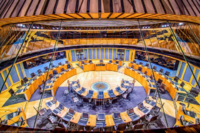 |
|
Government (121) Social Democrats (99) Green-Left (22) Opposition (78) Moderates (45) Liberal Party (10) Esthur People's Party (8) Helmark National Union (7) Renewal Front (2) Socialist Front (2) Alliance (1) Progressives (1) Solidarity (1) + Vacant (1) |
 |
|
Government (339) Social Democrats (339) supported by (31) Green-Left (31) Opposition (180) Moderates (97) Helmark National Union (24) Liberal Party (20) Esthur People's Party (14) Socialist Front (7) Progressives (6) Alliance (3) Solidarity (2) National Democrats (1) Independent (1) |
The Forethane has been Harold Osborne, a representative from the Osynstric branch of the Social Democrats, since 30 January, 2015. The House of Thanes, the upper of two Houses of Berworth, has been a majority of the Social Democrats since 1 November, 2023; the House of Ministers, the lower of the two Houses, is currently held by a Social Democratic majority following the 2018 Esthursian general election. The Midlands by-election for the vacant Thane seat would put the Social Democrats into a one-party majority in both houses for the first time since before April 2022 should they gain the Midlands 1 seat from the late Moderate incumbent on 26 October. The current ministry is the fifth Osborne ministry.
The House of Thanes has been elected through the "open party list" system since 1933, following reforms to the previously unelected House of Thanes by the then-Forethane George Asmont amid the general reforms by their Workers' Union governments in the early-to-mid 20th century. Attempts to reverse the reforms in the 1950s by PM Olafn Arbjern of the National Party were unsuccessful after a constitutional standoff between the Workers' Party-held Thanes and right-wing House of Ministers.
Forethanes are, as per the Constitution of the Union of Esthursia being signed in 1957, the "party leader or independent member able to command the allegiance of the greatest coalition of representative members in the House of Thanes." This Constitution also began the precedent of electing both Houses at the same time, to avoid standoffs of the nature that existed over the previous decade. This has typically left the Forethegn working with coalitions, as no party since 1994 has successfully attained a majority in the House of Thanes. Coalitions breaking up and allegiances switching to other party leaders is a rare occurrence, but has happened in the past, such as in 2011 - this usually leads to a snap election, as it did in February 2011.
The House of Thanes also has the power to confirm constitutional reforms with three-quarters of members voting, however some sections require a nationwide referendum. The most recent time this has happened was 1996, whereby then Prime Minister Martha Grantham successfully passed Articles 12a through 16b through a referendum in the same year, having sought to draw an end to the Workers' Rising of the late 80s and early 90s. The House also formerly had the power to confirm Aldermen into the Council of Elders, however this power passed to the Electoral Commission in 1999. 401 members are elected to this House each general election, which is held every 4 years snap elections notwithstanding.
The Deputy Prime Minister - not to be confused with Second Minister, or the typical name for the upper house coalition second-party leader - has been Brooke Alderney since 11 June, 2014. This House has been held in a fair majority - this meaning between 50 and 100 - by the Social Democrats since the 2018 general election. The Deputy PM leads the House of Ministers, and is typically from the largest party, however there have been exceptions due to coalition agreements in the past. Unlike the Prime Minister, the Deputy PM usually commands a majority in the House of Ministers - including as of January 27, 2022 - thanks to the "winner-takes-all" system currently operating for this House. There are 551 members elected to the lower house, although notable campaigns have been executed for both increasing it to 600 or 650, and decreasing it to 400 or 500 in recent decades.
The House of Ministers is the House where most legislation begins, although the Thanes reserve the power to begin writing legislation to send down to the Ministers, and they often reach a stage of "ping-pong" between the two Houses before seeking the King's Stamp.
Law and criminal justice
The High Deemery is a group of 11 Deemers, who must be fully qualified judges or barristers. The most senior justice, or First Doom, has been Alison Havering KC since 22 February, 2020. They hold selective power over both Houses of Berworth, and preside over multiple roles as impartial judges:
- Upholding the Constitution, and maintaining the power to strike down laws which do not abide by the Constitution
- Prosecuting Members and Barons who act against the Constitution, the Berworth Code, or break the law
- Investigating Members and Barons' conduct
- Settling disputes between local, regional and national government entities
Esthursia's criminal and civil legal systems begin primarily from local courtrooms; formerly ran by "laymen" magistrates, the 2010s-2020s Government under Harold Osborne, a former barrister and advocate for legal reforms, brought more stringent requirements. District Judges, colloquially known as DJs, now conduct rulings and processes in the lower rung of the court system - these are legally qualified experts. Above this, cities and large towns have at least one Union and Rouping Court - sometimes in the same building; there is no established Court of Appeal, instead the next (higher) body both determines an appeal, and also whether such an appeal is passable; approximately one-third to one-half of appeals are instantly rejected by the second appellate body.
Criminal law in Esthursia is contained primarily in the Code of Atlish Law. Separated between different bodies of law - Osynstric and Asthonic, with Cordanian law primarily being related to Osynstric with some key differences - Asthonhelm, and to a lesser extent Cordane (over whom the First Court of Osynstry presides, unlike Asthonhelm) run their parallel legal systems. The Yfirvald has more appellate and constitutional power than the First Court as a result.
Esthursian law also has an increasingly strong presence of employment tribunals, known more widely as the Umbodsman. The Umbodsman can refer to any court below the highest rung, and primarily aims to arbitrate between employer and worker in the case of either unfair treatment, legal precedent or retroactive malpractice.
Until 1957, these Deemers (or Dooms) were elected by the House of Thanes, however this power passed to the independent Electoral Commission as a feature of the Constitution.
Crime in England and Wales increased by 37 per cent in the period between 1997 and 2012, after falling significantly in the previous decade, though since that peak there has been an overall fall of 34 per cent in recorded crime from 2012 to 2022, according to crime statistics. The prison population is 97,244 as of May 2022, putting the incarceration rate at 74 per 100,000, relatively low compared to comparator nations.
Civil unions - which are used more than marriages in Esthursia - have been legal nationally since 1992, and same-sex marriages from 2001. In 2014 and 2017, legislation recognising self-ID, a third legal gender (X) on passports, granting nationally available safe publicly-provided UHCS treatments to transition and banning conversion therapy all have pushed Esthursia towards tolerant attitudes. LGBTQ+ equality in Esthursia is considered advanced by modern standards.
Administrative divisions
Esthursia is a semi-federal union; most of its legal sovereignty is retained by the central Houses of Berworth, and the largest riding (Osynstry) has no central devolved body thanks to its disproportionate influence in the national legislature. Although this means that most power to bodies such as the Stjórn of Helmark is devolved by the Houses of Berworth in a revocable manner, the 1963 Overlaw explicitly states that Cordane has legal sovereignty over its powers, meaning that its powers are separated from the Houses of Berworth.
The largest constituent riding by far is Osynstry, which contains nearly 100 of the 130 million inhabitants of the Union. Helmark is the next largest, containing approximately half of the remainder, while the collective other ridings (except Cordane) are often known as the "Third Riding", or as Consewent, a union of Cumbric-derived cultures that is interchangeable with the collective of Ezhonyth, Helvellyn, Merthing and the Ereways.
There has been a significant shift of power over the last century, particularly for Helmark, away from Berworth and towards the devolved legislatures; Cordane has also received devolved power on top of its sovereign powers. This has increased the power of both regional parties (such as the Alliance, who are the right-of-centre governing party of Cordane, or the Consence Liberals, who govern two Consence devolved bodies), and regions themselves. Helmark has a significant nationalist movement as a result of its individual heritage, emboldened by the increase in localised power, and the Helmark National Union - a left-wing Asthonic nationalist party - has dominated elections in the riding fo the last decade.
| ||||||||||||||||||||||||||||||||||||||||||||||||||||||||||||||||
Devolution and local governance
First Reeve of Osynstry
First Reeve of Norwall
Astjórn of Helmark
First Minister of Cordane
Esthursia has four legally sovereign, and three politically sovereign, bodies of devolved power; the Cordanic Assembly, and Asthonic Stjórn have legal sovereignty, while those of the Riding of Consewent (also known as the "West Riding") have political sovereignty under the Acts of Consewent. The Asthonic Stjórn agreed to change its legal name to Helmark, although Asthonhelm remains a colloquial name for the region, and an anti-independence one; Helmark was coined as a way to separate Osynstry from Helmark, due to Osynstry and Asthonhelm's common etymology.
The First Reeves of Osynstry and Helmark, Catrin Brock (2020-) and Rune Holway (2008-) respectively, are both from the Social Democrats. The Astjórn of Helmark since 2016 has been Iðunn Þórsenn, of the left-wing Asthonic nationalist Helmark National Union. The First Minister of Cordane since 2019 has been Edvard Vander of the right-of-centre Alliance party.
Local governments are similar across Esthursia - all compose of wholly elected councils across districts typically centred in a major town, whose usually partisan majority govern the budget and workings of the council, known as a district. Cordanian districts get their stipend directly from the Cordanian Assembly, while all other councils get theirs from the central government, while metropolitan shires (stourboroughs in Atlish) compose of urbanised councils who get somewhat greater powers, particularly over local transport, housing and health. Aldermen are elected in these stourboroughs, such as the Alderman of Weskerby, as a directly-elected representative of the city's populace.
Foreign relations
Esthursia has historically been a non-belligerent, following constitutional reforms and conventions after the defeat at Scalvia in the early 1920s, which caused a wide socioeconomic crisis and a historic shift in its politics. Its intervention in the Scalvian War, however, has been significant in supporting the Volshan war effort in particular. Esthursia is a participating member of the Union of Aurorian States, International Economic Federation, and Food Security Organisation, and remains a key regional geopolitical player in Auroria. It was a founding member of both the Allied Nations (AN), an international sociopolitical alliance with democracies to uphold "the rule of law and human rights", alongside Prydania and Norsia - and of the Vieremä Group (V4), a political and cultural union of itself, Tardine, Sorovia and Hexastalia.
A long-term issue for Esthursia has been the volatility of the continent; in the 2020s, Tardine, the Aurorea and the Imperium all destabilised and the Aurorea in particular became entrenched in a war that dragged much of Ethia into its grasp. Esthursian participation was not only military, but also in terms of monetary loans - lending and granting approximately double of its original foreign aid budget (~71bn IBU) as an additional package of industrial and reconstruction funds - and welcoming a large number of refugees, with refugees particularly from Dogaži, Scalvia, as well as Tauroga around it and the Aurorea to its south later on in the war, and the wartorn states elsewhere in Auroria. Esthursia has also been known for seeking to uphold the rule of law and human rights globally, which has led to its use of economic sanctions on the governments of Iolanta and Rayvostoka in the present and past, and also its formation with Prydania and Norsia of the Allied Nations to this goal.
Esthursia is a signatory to the 2022 Savattenstad and Saintes conventions, however it did not sign onto a protocol on chemical, biological and radiological weapons, maintaining an ambiguous position on whether it harbours and/or produces any of the former; its present government has repeatedly denies it produces these weapons.
Defence
Esthursia has a comprehensive armed forces network, and under the Army 2025 plans conducted by the incumbent government, the military budget has seen persistent and consecutive investment increases. Esthursia's armed forces are split into three main branches; its Army, Fleet, Air and Space Force; approximately 600,000 people are estimated to serve in these armed forces as of 2022. Esthursia's naval fleet's commissioned vessels number 220; ninety-three are major surface combatants (thirty-two guided missile destroyers, five stealth destroyers, ten corvettes, forty frigates, three amphibious transport docks and three aircraft carriers), and twenty-six are nuclear-powered submarines (twelve ballistic missile submarines and fourteen fleet submarines). Its flagship, HRHS Edward V, is one of its three aircraft carriers, while its third aircraft carrier - HRHS Rickard IX - marked the first expansion of the Esthursian navy to having three in 2020. The Esthursian navy also consists of 18 nuclear-powered ships, 12 of which carry the Esthursian nuclear deterrent at any one time; approximately 600 nuclear warheads exist in Esthursia. Its air force has over 1,100 aircraft as of 2021, as well as over 83,000 personnel.
In recent decades, Esthursia has played a growing role in peacekeeping around the Aurorian region, and its blue-water navy has become a key proponent of Esthursian soft power in the region. Participation in the Aurorean War (2022-3) grew gradually, and Esthursian task forces as well as drone production and national defence all positioned Esthursia's armed forces further from its non-belligerent peacetime footing than it had been historically. The armed forces have also been known to be involved with rescue and disaster missions, recently on the Ereway Island of Helmsfell after its eruption in early 2022. Esthursia has intervened in the Imperium Civil War (2022-) militarily to establish safe routes for refugees to flee and safe areas to inhabit either permanently or in safe refuge.
Esthursia also maintains a sizeable, growing nuclear arsenal, first developed in the early 1970s under David Holmfirth and Anthony Moore, of which it has increased in size significantly in the last decade. It has a nuclear weapons cap of 610, up from 390 in the early 2010s, and has approximately that limit as of the end of 2023.
Economy
Overview
Esthursia's economy is an advanced, high-income mixed economy, primarily composed of service industries. In particular, Esthursia's main service industries are finance, healthcare and medicine, education and research, law and administration, food and drinks, and retail; the economy also has significant manufacturing presence, such as its long-standing automotives sector, energy, construction, transportation and infrastructure. The economy is run on the arian shilling, Esthursia's currency since the Royal Union adopted it in 1659 - and originally from the Classical era.
Esthursia's central bank - the Crown Bancke of Esþursia (CBE) - has been an independent institution since 1911, with control over the nation's monetary policy. Although a significant part of Esthursia's financial sector was nationalised in the aftermath of the 2009-12 Esthursian financial crisis, most Esthursian finance remains within private or majority-private banking. Like the CBE itself, Esthursia's financial sector is centred in the capital of Weskerby, however - particularly after the financial crisis - the sector is diversifying elsewhere, with the second city of Brantley being a favoured location for moving firms and branches.
The gross domestic product of Esthursia is 6.714 trillion IBU as of September 2023, or at ʃ4.348trn in Esthur arian shillings.
A significant amount of Esthursian industry is nationalised, with state or public bodies making up 43.5% of Esthursian employment and 53% of Esthursian GDP as of March 2022. Examples of nationalised industries include the health and care service (Union Health and Care Service, or UHCS), education (National Education Service, NES), and the railways (United Atlish Ironways, UAI).
Finance
Esthursia, since the early 20th century, has had a growing finance industry; the actions of Neville Salisbury to regulate, in a simple manner, finance and monetary exchange in Esthursia - further bolstered by the centralisation of banks in the 1910s - was aimed primarily at creating a creditworthy economy to allow transactions to securely take place. The 1980s saw the intensification of finance's growth, as deindustrialisation allowed finance to become a key component of the Esthursian economic output.
Civic banking, as well as civic investment banking, has been a key component and characteristic of Esthursia's finance economy and sector throughout its history, however in recent decades civic banking has taken precedence over private banking for many, and civic banks have grown to compete with corporate alternatives, while investment enabled by civic banks encourages spending and investment further. The growth of these types of banks has been encouraged by the national government as a result.
Energy
Esthursia's energy mix, between the Industrial Revolution and the 1960s, was primarily comprised of coal; natural gas began to be utilised for power in the 1950s to 1960s, while a brief attempt to use oil was abandoned in the early-1970s.
Energy mix of Esthursia (2024)
In the late 1960s, nuclear power began to be a key element of Esthursian power generation. 1966 saw the first nuclear power plant at Wesforth Hill, in the north-west of Osynstry, open; the north-west of Osynstry has since become a key region for nuclear power. Governments, both conservative and social-democratic, pressed forward with the outgoing Liberal government's interest in nuclear power generation; over a quarter of Esthursia's power was generated through nuclear energy by 1985.
The 1970s, 1980s and 1990s saw radical changes in Esthursian power generation; a brief attempt to integrate geothermal energy in the 1970s was mostly abandoned under the monetarist 1980s Conservative government under William Greenwood, who instead pursued the Rush for Gas, seeing natural gas become the key source of energy in the Union. However, thanks to a mixture of volatile gas prices and privatised firms using price-gouging as a way to generate income, the 1990s' change in government to a decade of Social Democrats saw not only a renationalisation of Atlish Energy in 1992 - and the Stategrid the previous year - but also a dramatic shift towards geothermal energy. This has relatively stayed the same, however the grid has since diversified into solar, wind, hydroelectric and biomass sources; biomass has, however, not been prioritised by the post-2018 Government ministries.
As of 2022, just under half of all Esthursian energy was sourced from geothermal power plants, just under a quarter from nuclear and a tenth from wind, with the remainder mainly coming from hydroelectric, solar and natural gas. Oil is set to be phased out completely by 2026, while natural gas is gradually being eked out, with forecasts suggesting total phasing out will take place by 2040. Esthursia has produced a surplus every year since 2004, and has begun exporting energy, as well as reducing prices every year for 6 years in the 2010s, as a result.
Since 2010, Esthursia has invested heavily in increasing its hydroelectric capacity in the north and west, especially across Norwall and Helmark, while the reduction in wind and solar power production costs have also driven up the use of these sources. Oil was entirely phased out in 2023 from the power grid, while natural gas is expected to be phased out by 2026, though exports of the latter continue to grow.
Esthursia is one of the most ideal nations in Auroria for wind energy production as a result of its location, and the reduction in prices to both construct and maintain wind turbines onshore and offshore has led to an explosion in their construction and use within Esthursia's energy network.
Transport
Esthursia has a comprehensive transportation network; although geared increasingly towards the use of public transport, private transport links remain well-maintained and used. Esthursian private transport is primarily electric and renewable-powered, as a result of phasing out of petrol and diesel powered vehicles in the 1990s and 2000s.
Esthursian public transportation began in the early-to-mid 19th century, as plans to draw up routes - mainly for freight and cargo shipping over long distances - sped up and by the late-19th century, passenger transport had become a key aim. Most trains until the mid-20th century were steam locomotives, which have since become emblematic of the burgeoning railway industry and have been key timepieces for museums to keep from the period; petrol, diesel and electric trains all persisted from this time period. The 1930s through the 1970s saw a rapid period of railway expansion as towns and cities were constructed and/or grew rapidly, however the 1980s saw a temporary redirection towards private transport and away from housebuilding as well as cancelling significant portions of existing plans; this trend discontinued into the 2010s.
Esthursia has an extensive network of high-speed railways, with around 10,000km in length operating as expressways (>200km/h), and 3,737km as of October 2023 operating as GSIs (great-spede isernbæns, lit. high-speed rails, typically 300-320km/h), with the first opened by James Seddon in June 1978. There are currently eleven fully-operational GSIs, with potentially three more in planning. Esthursian high-speed rail was initially relatively exclusive to the more affluent as a result of higher prices for faster travel, however government subsidisation and steady reductions in costs, furthered by the electrification efforts of the 1990s to 2010s, has driven prices to a relatively affordable level.
Esthursian railway networks have been a key source of interest by social-democratic governments; statistics by the INS have shown that punctuality and quality of service have been, albeit gradually, consistently improving since 2000. Esthursia operates a high-speed railway network between key regions, particularly along the Fjarmagn-Esthampton corridor, and between Brantley and Weskerby. Gloucester, the nexus of the network between Fjármagn, Weskerby, Execester and Brantley, has seen the Gloucester Miracle of economic prosperity and population boom as a result of its prime location between Esthursia's key cities.
Esthursia's inter-city trains are mainly unique in that they still operate with compartments; this is due to a 1980s decision by Atlish Ironways, the national railway company (at the time a for-profit private company), to maintain them in order to preserve middle-class commuters spending regularly for journeys into Weskerby and Brantley in particular.
Inside of urban areas, Esthursian local districts operate extensive networks of public transport, including tramways, trolleybuses and bus route networks. Brantley is renowned nationally for its formidable public transportation services; Weskerby, Rennezh and Fjármagn have aimed to emulate the network implemented in Brantley, as have Execester and Esthampton in recent years. Esthursian politics moved decisively against private transportation, especially in urban areas, in the late 20th to early 21st century, with most major cities passing "anti-motorist" laws - such as reducing parking, converting roads to public spaces or pedestrianising, reducing motorists' speed limits while increasing bus lane speed limits, and charging for use of private transport in city areas. Many also charge "public transit taxes", and most have no-tolerance on illegal parking, as well as banning fossil fuel cars from entering city regions. As a result, public transport has received significant investment, while cities in Esthursia have been transitioned into more walkable and commutable areas suitable for efficient, reliable public transportation networks such as tramways, trolleybuses and bus networks.
Esthursia has a significant automotives sector, especially as it is potentially the largest market for electric cars in the world at present and almost certainly the longest-standing one; its automotives sector has benefited from the wider push for green energy in recent years, as global demand for good-quality electric cars continues to rise, with Esthursia's well-established brands such as Westway and Marland showing record profits in the 2020s.
Water supply and sanitation
Access to clean water is universal in Esthursia, and funded entirely through general taxation. Approximately 97 in 100 households in Esthursia are connected to the sewer network, which was pioneered in the mid-19th century in Esthursian cities.
Water providers were, for a period between the 1980s and the 2010s, entirely private and subject to government regulation; since the 2010s, they have been renationalised and are now run by regional authorities, under the umbrella organisation of Atlish Water (AW).
Culture
In Esthursia, a culture of openness, democracy and high levels of active, empassioned participation have persisted since the Popular Revolution in the late 17th century. Esthursia's approach to politics and government, including encouraging multiculturalism, which is based on student visas and refugee "open arms" programmes, social integration and rehabilitation, and alienation of far-right politics, has wide public support. Government policies such as publicly funded health care, higher and more comprehensive taxation to redistribute wealth, the outlawing of capital punishment, strong efforts to eliminate poverty, strict gun control, secularism, high trade unionism rates and propensity to strike and protest, socially liberal attitude toward women's rights (e.g. abortions) and LGBTQ+ rights such as to change legal gender or access free gender affirming treatment, legalised euthanasia and regulated cannabis use are all indicative of Esthursia's political and cultural values. Esthurs also identify with the country's foreign aid policies, peacekeeping roles, their King and monarchy, the Kingswoods, and the Overlaw. The nation's wildlife also inspires confidence in native Esthurs.
Music
Esthursia in the Imperial era was famed for its poetry - this developed into a post-Revolution classical strand, where literature and music moulded together. Graham Ingley, a composer from the 17th century, is possibly Esthursia's most well-known and famed classical musician; modern EPP leader Graham Ingley is named after the composer, but is unrelated.
Modern music in Esthursia is a mixture of pop music and heavy metal. Esthursia's counter-culture movement took off in the 1950s, during the Arbjern resistance years, as well as during the urban degeneration, socioeconomic unrest and deindustrialisation of the 1980s, with Roadkill taking off in the 1980s as an example of a heavy metal band prevalent in Esthursia at the time. A third wave of metal bands took off in the 2010 financial crisis.
Media
Esthursia exports significant Mercanti and Atlish television, as a result of its state produced media under the ENBC, its impartial news programmes in ENBC News, and the ease of using the world's lingua franca as an effectively native language. The ENBC, or Esthursian National Broadcasting Corporation, was founded in 1928 by the Esthursian government as a central body to distribute and produce radio, television and eventually internet broadcasts and media, including news and documentaries. One of the world's largest state broadcasters, it transmits internationally.
Several private organisations also exist as major players in the Esthursian regulated media market, alongside the ENBC, such as Channel 2, NPBC and ETV. Channel 2 is an independent, with minimal oversight by the state but public ownership, corporation promoting independent media and effectively running off of its own revenue, particularly from advertising, founded in the 1980s under William Greenwood to nurture "small-man media". Helmark News (HN1) dominates the Helmark TV and news market alongside these.
Esthursia's two largest cities, Brantley and Weskerby, dominate its media sectors, although Esthampton has a burgeoning sector in media and telecommunications. Esthursia's language - Atlish - and ability for its speakers to code switch into the global and regional lingua france, Mercanti, allows Esthursia to be a hub for international media and communication. Channel 2 moved to Cambury, a north-western Esthursian historic textile city, moving thousands of jobs into the north-west of Osynstry in 2018. The Esthursian publishing sector employs nearly 400,000 people in 2022, with the combined total of books, newspapers, databases and directories all creating an annual turnover of 30 billion arian shillings. In 2020, Esthursia produced 2,292 book titles per million inhabitants, towards the higher range of comparator nations.
During the 2010s, internet usage and exposure to Esthur citizens rose dramatically from 78.9% in 2010 to 95.1% in 2020, and has continued to rise, especially thanks to Esthursia's government offering fully subsidised usage of its own state broadband provider from 2023, after a decade of gradually falling prices.
Cuisine
Esthursian cuisine is fairly varied but shared similarities nationally - a relatively high use of meats, particularly lamb and beef, as well as a significant use of milk and dairy products, such as in the nation's cheeses. Due to relatively low exposure to world cuisines, Esthurs have only recently begun to intake and demand a wider scope of cuisine, and staples continue to predominate Esthur cuisine. Furthermore, Helmark and the Cumbric ridings all have individual cuisines, particularly Helmark, derived from their own heritage. Lamb is particularly seen across Esthursia, although pork belly is known as the regional food of Cordane with its heritage also coming from Helmark and Gotic culture before this. Kjøttkaker, or Helmark meatballs/meatcakes, are now popularised by the multinational furniture retailer amlø, based in Fjármagn, Helmark, since 1955.
Esthursia also has a significant range of sweet products, and desserts are common in Esthur cuisine. Esthursian fudge is a particularly strong export from the nation, known for its sweetness and particularity, and fudge is used nationally in many desserts such as cakes and confectionaries.
Veganism and vegetarianism rates are relatively low compared to comparator nations, but are rising, reaching 4.5% in 2022 according to a survey by a major polling company.
Sports

Esthursia's national football team, the Stags, participated in the World Cup of 2023. Motorsport is particularly popular in Esthursia, thanks to its history with automotives engineering and racing, and Esthursia produces a significant number of world-class drivers and cars. Esthursia has a significant heritage in kickball, its native name for association football, for which it operates four professional leagues and a total of approximately one-hundred professional teams, as well as a larger number of regionalised professional to semi-professional leagues below League Four, the lowest tier of Esthursia's national professional system.
Esthursia operates professional rugby leagues alongside these nationally, as well as cricket and golf. Chess is also well-known amongst the Esthursian populace, with many chess grandmasters sourcing from Esthursia, such as GM Mickael "Micky" Adams; Gatherings, national competitions, have run annually since 1903 for the most professional and advanced players. Women's chess is also promoted quite heavily by the government and by chess organisations as, like on most of the world, Esthursian chess persists to have heavy gender imbalances.
Symbols
Esthursia has a number of symbols relevant to its history and culture - its flag dates back to the Classical Empire over a millennia ago, while its coat of arms date to 1828. Esthursia's national animal is the deer, adopted likely from Prydanian settlers (whose national animal is the stag). Its iconic, but not official, flower is the primrose, derived mainly from commemorating the death of Archibald Primrose in 1893.
King Edward V donated one-third of the Crown's estate in his final decade before 1947 to planting and cultivating pears across the nation, and his old age eccentricity is often celebrated by Esthurs, while pears have become a central part of Esthurs' identity. King Arthur VI, due to his exceptionally long reign into the modern day, statesmanship and his anti-fascist stances and actions in youth, has often been associated internationally with the nation's persona as a whole, though Mildred IV's likeness is also used often as a personification, typically named simply "Mildred" in said context. The name "Wilfred" has also been used sporadically to personify the nation, such as by Scalvians during the Scalvo-Esthursian War in the 1920s.
Public holidays

Esthursia celebrates a number of public holidays, some of which are internationally recognised and some are nationally significant. A total of 22 (or 23 in leap years) days are celebrated, half of which comprise of the holidays at the middle and ends of the year. Whiteve is the sole public holiday not recognised with a day off of work, mainly due to the fact that it is peripheral to Whitday and comprises of the evening following the unrecognised day.
New Year's celebrations are particularly competitive, with Brantley and Weskerby in particular aiming to outcompete each other's celebrations each year with new and vibrant fireworks displays.
| Date | Mercanti name | Native name | Notes |
|---|---|---|---|
| 1 January | New Year's Day | Nieyear's Dæg | |
| 30 January | The Crown's Birthday | Kingsberthdæg | The birthday of the incumbent monarch, King Arthur VI; celebrated on 30 January since 1948 |
| 16 February | Levelyntide | Levelyntide, Llyntide | Llywellyn, or Levelyn in Atlish, is both the patron saint of Esthursia and the King who led the eventual resistance to the Classical Empire's tyranny |
| 19-23 March | Yeoster/Eostre | Eostre or Yeostre | Spring equinox derived from the Early Atlish Ēostre, or roughly rising dawn |
| 21 April | Greening Day | Gronningdæg | Spring festival, reinforced by secularised Messianist Easter |
| 1 May | International Workers' Day | World Werkersdæg | |
| 31 May | May Day | Merrydæg | Last day of the fifth month in Atlish calendar |
| 15 June | Remembrance Day | Eftcalldæg | End of war for Cordane |
| 28 June - 2 July | Midsummer | Midsummer | Five day holiday |
| 29 August | Harvest | Harvestdæg | First day of month of Harvest in Atlish |
| 23 October | Union Day | Anningdæg | Celebration of victory of Asmont government and anti-fascist protests against fascist Osynstric Renewal Front (ORF) march in Esthampton on this date, 1926 |
| 31 October | Hallowe'en | Allhallowse'en | Derived from ancient folk tradition, reinforced by global trends |
| 8 November | Bonfire Night | Bænfyrh Niht | Celebration of Popular Revolution's storming on Armston House in 1689 |
| 19-20 December | Whiteve and Whitday | Hwiteve ond Hwitdæg | Whiteve is not a holiday in the day, so only 20 December is a public holiday |
| 26/27-31 December | Midwinter / Yuletide | Midwinter / Yuletide | Lasts a day longer in leap years |
*note that all dates after 29 February move back 1 day in leap years, as Atlish calendar does not adapt months to this
Infrastructure
Not completed yet




